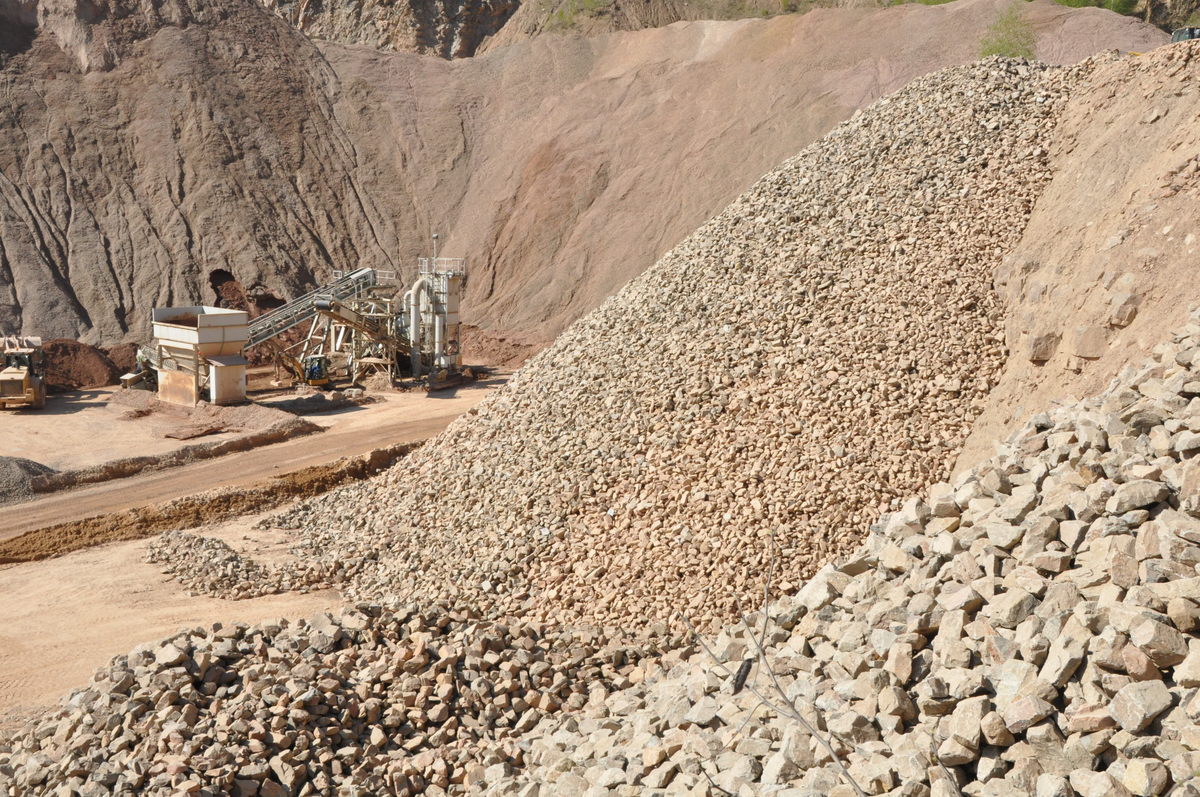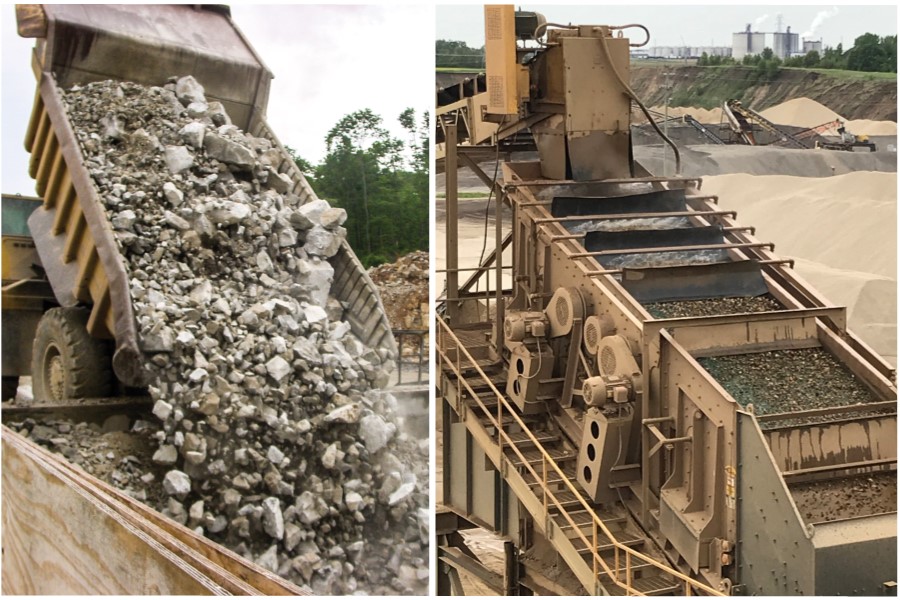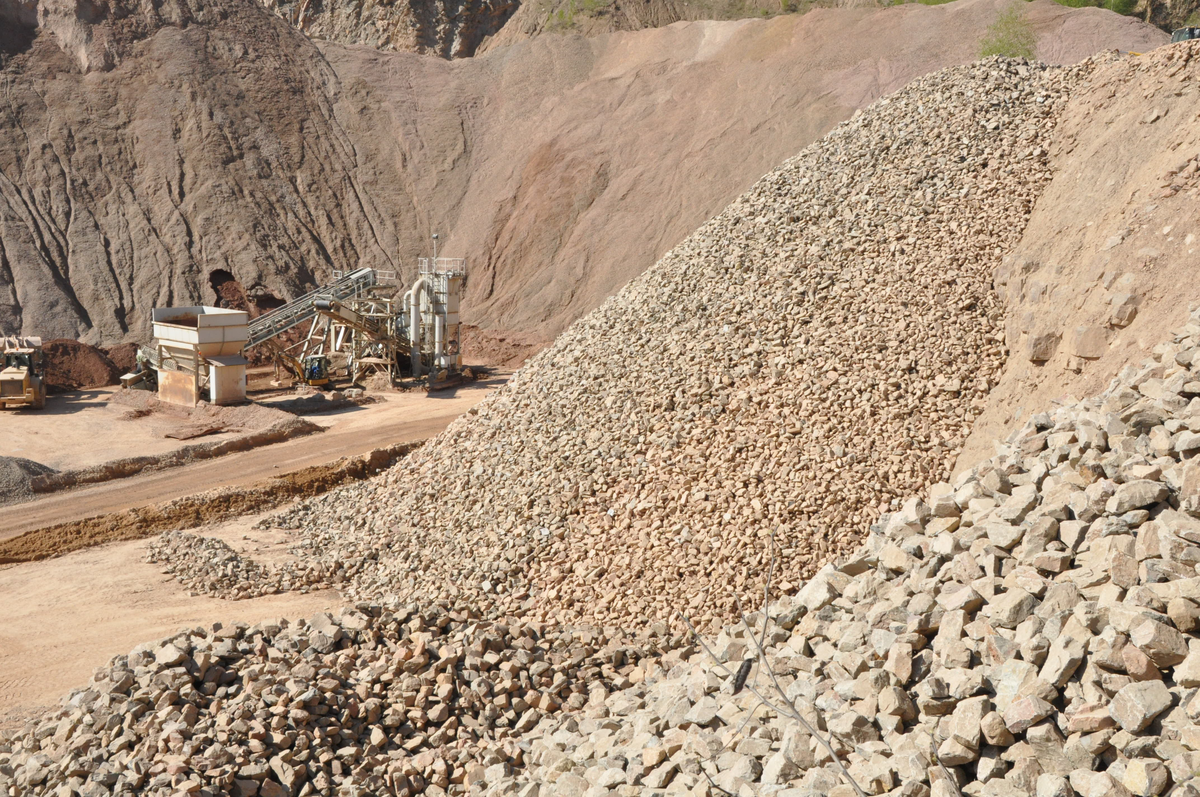By Brad Pronschinske on Aug 20, 2021 9:45:00 AM
This summer, I had a backyard oasis installed at my home. It consists of an in-ground swimming pool, concrete patio, and landscaping. Watching the progress was entertainment for my wife and me. The hole was dug, the pool was dropped in, the forms were poured for the patio, and A LOT of aggregate was brought in.

How Much & What Kind of Aggregate
- First, there was the rock to backfill the pool, which was a mixture of sand and pea gravel.
- Then came the mixture of fine and coarse crushed stone for the base layer of the patio. The different-sized stone is used for better compaction and in turn, a greater finished product.
- Next in, the redi-mix concrete truck to pour the patio. The redi-mix is a mixture of sand, crushed stone, concrete, and water. The sand and stone actually make up 60-70% of the concrete.
- Finally, the landscaping began with several tons of 1” river rock which my wife insisted on having around the pool.
All in all, I think my "little" project consumed about 50 tons of aggregate which is easy to take for granted and forget about once the work is done. However, there are approximately 5000 aggregate operations in the U.S. These plants produce around 2.5 billion tons of aggregate on an annual basis, supporting the entire infrastructure of this country. To put that in perspective, The Great Pyramid of Giza (750 ft. tall) weighs about 5.75 million tons or 0.2% of the material mined every year in the U.S.
How Aggregate Operations Work
These aren’t simple operations. First, the earth needs to be mined...either with excavators or explosives. The aggregate is then hauled in trucks and  , turning big rocks into smaller rocks. The material is loaded onto conveyor belts and run through screens to sift/separate the larger rock from the smaller. Some rock is then crushed a second or even a third time. The material is washed and screened again and eventually conveyed into piles to await the next project.
, turning big rocks into smaller rocks. The material is loaded onto conveyor belts and run through screens to sift/separate the larger rock from the smaller. Some rock is then crushed a second or even a third time. The material is washed and screened again and eventually conveyed into piles to await the next project.
How Do I Know?
I visit a lot of plants/sites as a Product Manager for Martin. We get called on-site to help troubleshoot problems or to install and maintain components that aid in material handling. Throughout the quarry, I get involved in  .
.
- Haul Trucks: Sometimes material does not completely evacuate the truck bed. This is lost material.

- Crushers: Material can easily become blocked/restricted within the crusher. If material isn't flowing, it negatively affects the rest of the operation.

- Conveyor Belts: There are many components on conveyor belts that help them run safely and productively. A few of the most common that people employ to better their operation are:
 |
| 
- Screens: In the screening process, reliable vibration is needed to sort, size, separate, dewater, and move material along to the next step in the process.

So, the next time you are working in the yard or completing a honey-do list (like I often do), you don’t have to wonder where all that “rock” came from. I want to thank all of those working in the aggregate industry, I know it takes a lot of hard work and dedication. It is neat to see "two worlds collide" and working in the bulk materials handling industry myself and having been on-site at hundreds of quarries, I was well aware of the backstory and the process it took to get that rock delivered to my backyard. Now my wife is up to speed also. Our pool will be up and running soon...just in time to close it for the year. 😆




comments